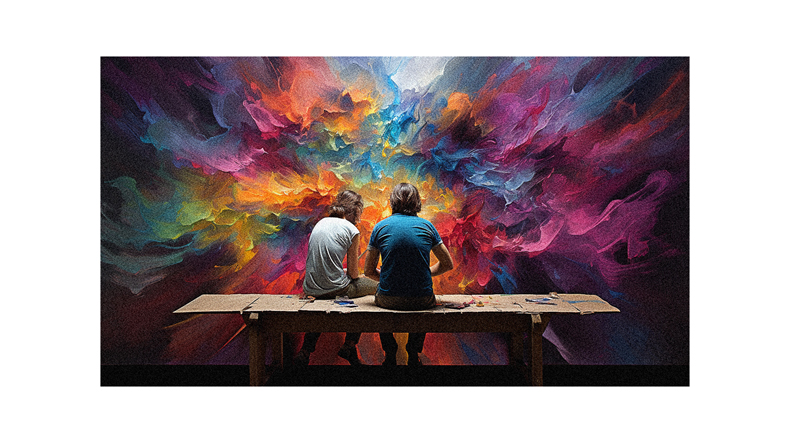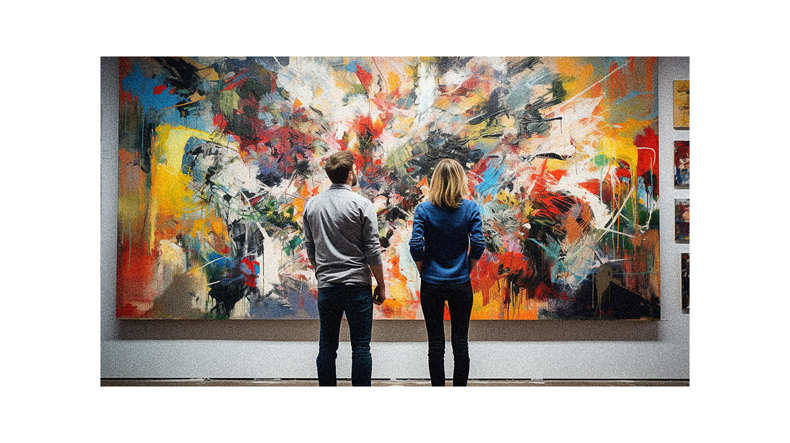In the ever-evolving art world, the globalization of contemporary art trends has become a prominent force shaping the industry. As technology continues connecting people from all corners of the globe, the internet has given rise to a surge in online art sales, fueling unprecedented accessibility and exposure for artists worldwide. This shift has paved the way for new opportunities and challenges within the art market.
One such challenge is the growing dominance of the Chinese art market, which has experienced remarkable growth in recent years. On the other hand, local economies like the United States continue to support their art markets. However, despite this growth, there remains a notable shift in demand towards lower-priced works rather than high-value pieces.
As they navigate this global landscape, small and mid-sized artists, galleries, and auction houses face unique obstacles. The competition among museums and private collectors for museum-quality works further complicates matters. Moreover, political uncertainties in leading European countries add another layer of instability to an already complex market.
Amidst these challenges lies a vast array of artistic expression waiting to be discovered by audiences worldwide. From traditional Old Masters artwork to modern masterpieces dominating Western markets, there is no shortage of creativity awaiting exploration.
To thrive in this globalized era, players in the art market must strengthen their online presence while improving marketing skills and expanding their reach to new audiences. Additionally, individuals seeking to collect art must consider personal taste and inspiration when embarking on their artistic journey.
Ultimately, understanding and embracing contemporary art trends are essential not only for those directly involved in the industry but also for anyone with an appreciation for artistic expression on a global scale.
Art Market Growth
The growth of the art market, particularly in globalization, has led to increased opportunities for artists, galleries, and collectors to trade and share services on a global scale, resulting in the rise of popular events such as art fairs and biennials that serve as platforms for creative exchange and communication.
The global network of gallery owners, curators, and artists has become increasingly interconnected, facilitating the expansion of artistic practices beyond national boundaries. Asian collectors, especially those from China and Korea, have emerged as influential players in shaping the art market dynamics.
This growth has also given rise to new stylistic trends and movements as artists from different cultures interact and influence each other’s work. Digital innovation and social media platforms have further facilitated the global sharing of artwork, allowing artists to reach wider audiences.
However, this globalization also poses challenges as artists may feel pressure to create works that conform to international tastes rather than exploring their unique artistic expressions. Globalization has complexly impacted contemporary art trends by fostering cross-cultural dialogues while potentially homogenizing artistic styles.
Challenges Faced

Challenges encountered in the ever-expanding art world include navigating the complexities of an interconnected and rapidly evolving marketplace. Due to intense competition, small and mid-sized artists, galleries, and auction houses face difficulties breaking into the global market. Museums also face challenges acquiring museum-quality works as private collectors compete for them.
Additionally, the dominance of lower-priced works has driven demand away from high-priced pieces, making it harder for artists to sell their more expensive creations. The uncertain nature of fine art as an investment further complicates matters, with shifting demand and variations in popularity affecting market stability. Furthermore, political uncertainties in leading art market countries introduce potential instability into the global art market landscape.
These challenges highlight the need for players in the art market to strengthen their online presence, improve marketing skills, and foster stronger relationships throughout the purchasing process to increase their share of this expanding global marketplace.
Artistic Expression
Artistic expression in the rapidly evolving art world requires artists to explore new forms of creative communication and engage with global audiences. As globalization continues to shape the art market, artists face the challenge of creating works that resonate with an international audience.
The rise of digital innovation and social media platforms has facilitated the global sharing of artwork, providing artists with opportunities for visibility and engagement beyond traditional boundaries. However, this increased connectivity also brings potential risks of homogenization and conformity to popular styles and trends.
To stay ahead in the globalized world, artists must experiment with new forms of artistic expression that push boundaries and offer fresh perspectives. By embracing cross-cultural dialogues on an international scale, artists can navigate the complexities of globalization while maintaining their unique artistic voice.
Influence of Asian Collectors
Asian collectors have emerged as influential players in the global art market, shaping the landscape and dynamics of the industry. The rise of Asian economies, particularly China and Korea, has increased wealth and disposable income among their populations. This newfound affluence has fueled a growing interest in art collecting, with Asian collectors now being recognized for their significant contributions to the market.
Their preferences and tastes have influenced artistic trends, movements, and pricing strategies. Furthermore, Asian collectors have actively participated in international art events such as art fairs and biennials, further establishing their presence on the global stage.
As a result, artists worldwide are increasingly creating works that resonate with Asian collectors to gain recognition and success in this expanding market segment.
Impact of Digital Innovation
Digital innovation has revolutionized the art world, connecting artists, collectors, and galleries across borders in a virtual realm of limitless possibilities.
The rise of social media platforms and online marketplaces has allowed for the global sharing and promotion of artwork. Artists can now reach a wider audience and gain exposure without the constraints of physical location.
Collectors have access to a vast array of artworks from around the world, expanding their options beyond local markets. Galleries can showcase their collections online, attracting international buyers and increasing sales potential.
Additionally, digital tools such as virtual and augmented reality transform how art is experienced by allowing viewers to engage with artworks in immersive ways.
However, while digital innovation has opened up new avenues for artistic expression and commerce, it also raises questions about authenticity, copyright infringement, and the impact on traditional brick-and-mortar galleries.
Follow us on Pinterest for more tips, tutorials, and artist reviews!





